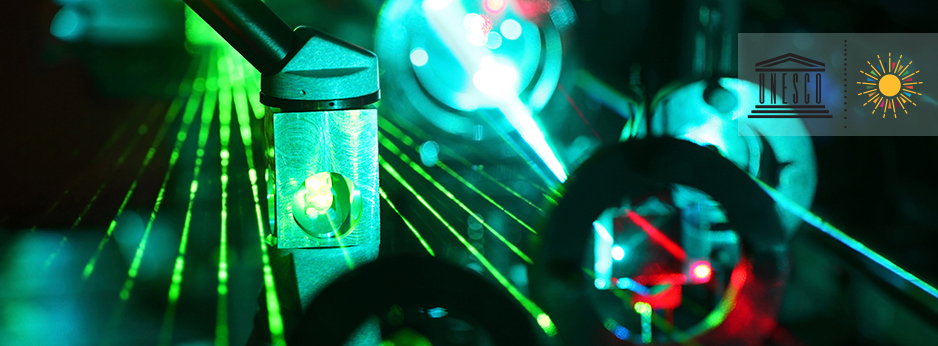
Courtesy: UNESCO
From a May 11, 2018 United Nations Educational, Scientific and Cultural Organization (UNESCO) press release (received via email),
UNESCO will welcome leading scientists on 16 May 2018 for the 1st edition of the International Day of Light (02:30-08:00 pm) to celebrate the role light plays in our daily lives. Researchers and intellectuals will examine how light-based technologies can contribute to meet pressing challenges in diverse areas, such as medicine, education, agriculture and energy.
UNESCO Director-General Audrey Azoulay will open this event, which will count with the participation of renowned scientists, including:
- Kip Thorne, 2017 Nobel Prize in Physics, California Institute of Technology (United States of America).
- Claude Cohen-Tannoudji, 1997 Nobel Prize in Physics, Collège de France.
- Khaled Toukan, Director of the Synchrotron-light for Experimental Science and Applications in the Middle East (SESAME) based in Allan, Jordan.
The programme of keynotes and roundtables will address many key issues including science policy, our perception of the universe, and international cooperation, through contributions from experts and scientists from around the world.
The programme also includes cultural events, an illumination of UNESCO Headquarters, a photonics science show and an exhibit on the advances of light-based technologies and art.
The debates that flourished in 2015, in the framework of the International Year of Light, highlighted the importance of light sciences and light-based technologies in achieving the United Nations Sustainable Development Goals. Several thousand events were held in 147 countries during the Year placed under the auspices of UNESCO.
The proclamation of 16 May as the International Day of Light was supported by UNESCO’s Executive Board following a proposal by Ghana, Mexico, New Zealand and the Russian Federation, and approved by the UNESCO General Conference in November 2017.
…
More information:
- Programme (pdf)
- International Day of Light https://en.unesco.org/commemorations/dayoflight
I have taken a look at the programme which is pretty interesting. Unfortunately, I can’t excerpt parts of it for inclusion here as very odd things happen when I attempt to ‘copy and paste’. On the plus side. there’s a bit more information about this ‘new day’ on its event page,
Light plays a central role in our lives. On the most fundamental level, through photosynthesis, light is at the origin of life itself. The study of light has led to promising alternative energy sources, lifesaving medical advances in diagnostics technology and treatments, light-speed internet and many other discoveries that have revolutionized society and shaped our understanding of the universe. These technologies were developed through centuries of fundamental research on the properties of light – starting with Ibn Al-Haytham’s seminal work, Kitab al-Manazir (Book of Optics), published in 1015 and including Einstein’s work at the beginning of the 20th century, which changed the way we think about time and light.
The International Day of Light celebrates the role light plays in science, culture and art, education, and sustainable development, and in fields as diverse as medicine, communications, and energy. The will allow many different sectors of society worldwide to participate in activities that demonstrates how science, technology, art and culture can help achieve the goals of UNESCO – building the foundation for peaceful societies.
The International Day of Light is celebrated on 16 May each year, the anniversary of the first successful operation of the laser in 1960 by physicist and engineer, Theodore Maiman. This day is a call to strengthen scientific cooperation and harness its potential to foster peace and sustainable development.
Happy International Day of Light on Wednesday, May 16, 2018!
![[Downloaded from http://cedenna.cl/en/]](http://www.frogheart.ca/wp-content/uploads/2013/05/EasterIsland.jpg)